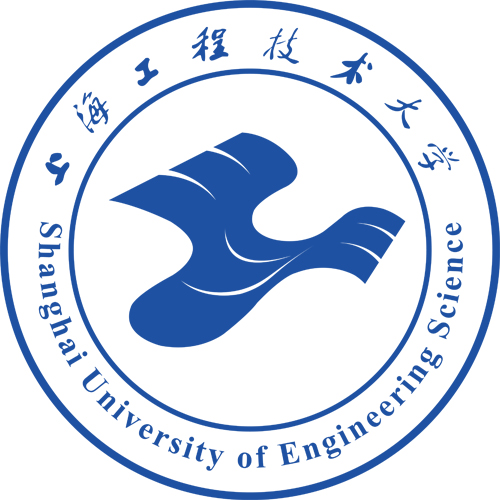Overview
Conference Introduction
2016 International Symposium on Information Technology Convergence (ISITC 2016) will be held at Shanghai University of Engineering Science (SUES), Shanghai, China, Oct. 14-15, 2016. The conference provides a chance for academic and industry professionals to discuss recent progress in the area of advanced information technology convergence.
The goal of this conference is to bring together the researches from academia and industry to share ideas, problems and solutions related to advanced information technology convergence. Authors are invited to submit original papers in all areas related to the information technology convergence and its applications. Topics will include, but not be limited to, the following areas:
- Signal and Image Processing for IT Convergence: Speech and biomedical signal processing and coding; Image/video coding and transmission, Cultural contents processing
- Web and Database Technology for IT Convergence: Web search engines; XML/RDF/OWL; Semantic Web; Web mining; Ontology development, Data semantics & integration; Data mining & OLAP; Data privacy & security; Data storage, retrieval & transaction management
- IT Convergence in Bio-inspired Intelligence: Nonlinear and chaotic circuits; Cellular neural networks; Methods of network circuit analysis, synthesis, design (including VLSI), and optimization, Bioelectronics& bio MEMS; BioICT convergence
- IT Convergence in Health Care: Electronic health records; RFID and medication safety; Needs for medical imaging in health care
- IT Convergence in Robotics: Robot vision, Sensor information fusion, Robot navigation, Robot localization, Intelligent agricultural robots
- IT Convergence in Transportation System: Telematics and ITS, GIS, Multimedia messaging, Infotainment, Traffic information system, Driver's safety, Obstacle detection
- Big data Technology: big data science and foundations, big data infrastructure, big data management, big data searching and mining, big data privacy/security, and big data applications
- Internet of things: Ubiquitous System, Sensor networks, Ubiquitous networks, Ubiquitous learning, Parallel distributed computing, Cloud computing
- Embedded Systems: DSP& Multimedia; Wireless sensor nodes, Linux, Multi-core, Multi-threaded processors, Networking & Communications
- Human-Computer Interaction: Ubiquitous interactivity, Learning and training for HCI, Interaction for the performing arts, Mobile media access and sharing
- Virtual Reality: 3D interaction for VR, Advanced display and immersive projection technology, Distributed and collaborative VR
- Smart Energy: Solar Power Applications, Wind Power Applications, Vehicle-to-Grid, Smart Eco-Cities and Communities, Design, development and operation of micro grids, Improving Reliability with Smart Grid Analytics, Trustworthiness of Smart Grids
- Green Computation: Energy-efficient service provisioning; Energy-efficient networking; Technology as Green Enablers (Grid, Cloud, Data Centers, Virtualization); Energy-efficient methodologies for infrastructure; Cooling/heating efficient energy; Power distribution; Green service life cycle
- Smart Grids Technologies: Sensors for Smart Grids; Wireless communications and networks for the Smart Grid last mile; Transport layer mechanisms for Smart Grids; IP interoperability in the Smart Grid; Multicast and secure multicast for the Smart Grids; Intelligent electronic devices (IED) for Smart Grids; Precision time synchronization protocols for the Smart Grids
- Biometrics: Fingerprint Recognition, Face Recognition, Finger Vein Recognition, Iris Recognition, Multimodal Biometrics, Biometrics Security
- IT and Cultural Innovation: Themes on cultural Innovation through IT including IT network and museums, Digital archives and libraries, Web-based cultural initiatives, IT and education
- Microwave Technology: Recent Design Technologies of Circuits, Antenna, and Subsystems for Wireless Applications
- Convergence Applications: Convergence of information technology to a wide range of fields including: medicine, environment, industry, communications
All papers will be fully refereed and undergo a review process by at least three referees of the international program committee. All accepted and presented papers will be published as an ISITC 2016 proceeding and the excellent presented papers will be further revised and published in Special Issues of prestigious EI Indexed Journals (SCOPUS) or SCI(E) Journals (e.g. International Journal of Distributed Sensor Networks, ISSN 1550-1329, Impact Factor: 0.665). To be included in EI /SCOPUS journals or SCI(E) Journals after revision, authors should pay journal publication fee additionally. The Special Issues of Journals are listed as follows:
- Journal of Computer Networks and Communications (SCI)
- IEEE Access (SCI)
- IET Networks (EI)
- Journal of Electrical and Computer Engineering(EI)
- Wireless Personal Communications (SCI)
- International Journal of Distributed Sensor Networks (SCI)
A complete 2-6 page manuscript must be submitted electronically in PDF format (in Standard IEEE double-column format posted on the conference website). The paper must be written in English. All paper submissions will be handled electronically by online submission system on the conference website.
(https://easychair.org/conferences/?conf=isitc2016)







